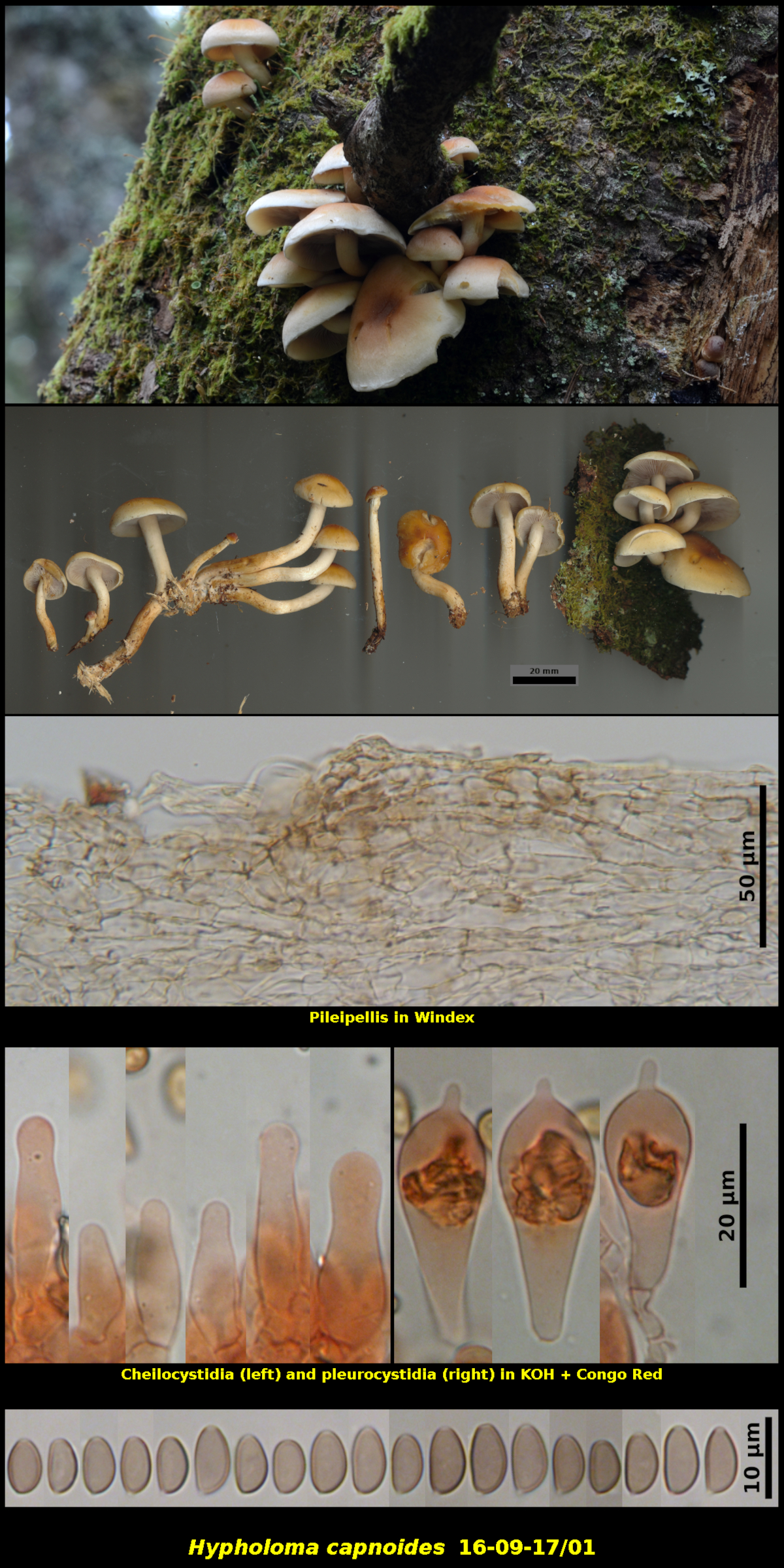Fleshy Fungi of New Brunswick >> Hypholoma capnoides
Hypholoma capnoides (Fr.) P. Kumm.

Clustered (many) on a dead standing trunk of Abies balsamea with bark loosening and falling, Little Lepreau, New Brunswick (16-09-17/01).
Pileus convex-hemispherical at first, expanding to more broadly convex, moist, with a thin pale yellow fibrillose universal veil at first, later appearing to be glabrous or obscurely fringed with veil material at the margin, dark red-brown (HSV20:60-70:50-60) at first and remaining so on the disk at maturity, grading out through greyish orange (HSV30:40:90) to the yellow (HSV45:05-10:100) marginal area, 15-36 mm in diameter. Stipe equal, dry, hollow, obscurely marked with small bands and streaks of orange brown veil material, pruinose at the immediate apex, very pale yellow (HSV45:05 or less:100) in the upper half, orange brown (HSV30:60:80-90) below, 40-72 X 4-6 mm. Lamellae nearly white to faintly yellow (HSV30:<05:100) at first, later pale purplish grey (HSV05:10:70-80), close to crowded, adnexed, not marginate. Flesh pale yellow (HSV40:05:100) in the pileus, concolorous with the surface tissues in the stipe, with a nondescript mushroom odour and taste.
Basidiospores forming a weak spore print difficult to assign to colour, ovoid, smooth, with an apical germ pore, brown, darkening slightly in Melzer’s Solution, 6.5-9.3 x 3.8-5.2 μm, Q = 1.59-2.07 (average[45]: 7.7 x 4.2 μm, Q = 1.82). Basidia clavate, 4-spored, with a basal clamp connection. Cheilocystidia forming a continuous sterile margin on the lamellae, ventricose to cylindrical, with a basal clamp connection, 14-27 x 5.7-8.3 μm. Pleurocystidia abundant and conspicuous, produced as chrysocystidia, with refractive inclusion large and and remaining hyaline in KOH, with a prominent mucro, 28-39 x 10.2-12.1 μm. Pliepellis yellow, a cutis of narrow encrusted hyphae above a subpellis of short hyphal cells. Clamp connections present on most septa.
This is one of the last mushrooms to appear in autumn in our region. It often grows in large clusters, and always on the dead wood of conifers. Like many species in the closely related genus Pholiota, H. capnoides has abundant chrysocystidia, characterized by their mucronate apices and refractive contents. The spore print in Collection 16-09-17/01 was very weak and almost invisible. When well-developed it should be dark brown to almost black.
Photograph: D. Malloch (16-09-17/01).